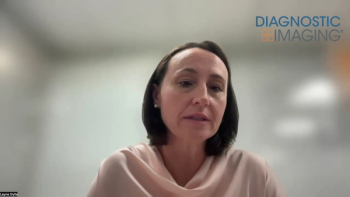
Preventive imager laments fall of EBCT, spreads the blame
"Few radiologists understand preventive cardiology. They are enamored with less noisy pictures, and that's it. And few traditionally trained cardiologists care about coronary prevention and risk stratification of the asymptomatic person. Prevention falls to the primary-care doctor who, sadly, witnesses the specialists' apathy.
"Few radiologists understand preventive cardiology. They are enamored with less noisy pictures, and that's it. And few traditionally trained cardiologists care about coronary prevention and risk stratification of the asymptomatic person. Prevention falls to the primary-care doctor who, sadly, witnesses the specialists' apathy.
"As a result, EBCT coronary calcium imaging, with its low reimbursement, has not been a growth industry. The MSCT angiogram, however, has animated both radiologists and cardiologists. My centers have been doing CT angios since 1999 (when it was FDA approved with the EBCT scanner), and yet the average doctor thinks this is a new field.
"The decline in interest in EBCT imaging is all about money for the manufacturers. If they can sell hundreds of MSCT scanners to radiology groups who need them for all of their CT services, is it worth maintaining a sales force for the very few cardiac hospitals or cardiology groups who really care about accuracy and clinical validation and would opt for an EBCT scanner?
"Let's not delude ourselves into thinking that the failure of an EBCT model has to do with superiority of the MSCT scanners. The real issue is that MSCT is just a better market for the manufacturers."
-Dr. James Ehrlich, president of the Society for Responsible Preventive Imaging and medical director of Colorado Heart and Body Imaging.
Newsletter
Stay at the forefront of radiology with the Diagnostic Imaging newsletter, delivering the latest news, clinical insights, and imaging advancements for today’s radiologists.




























